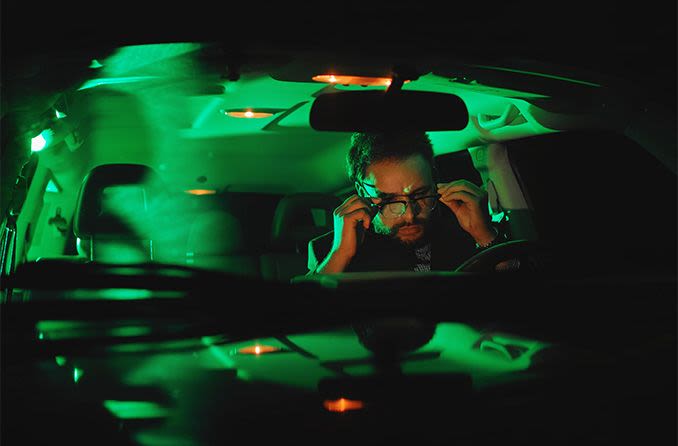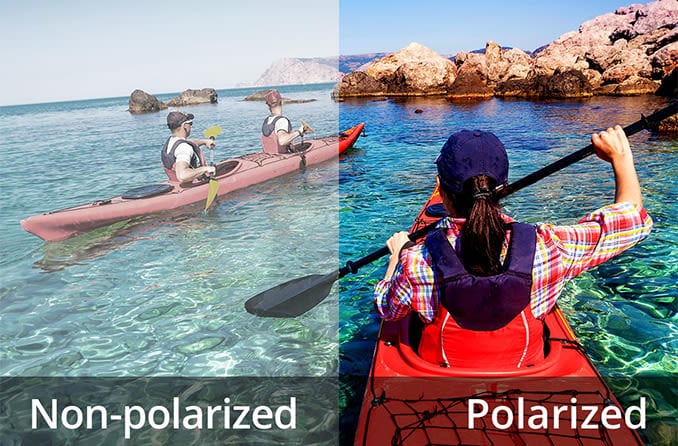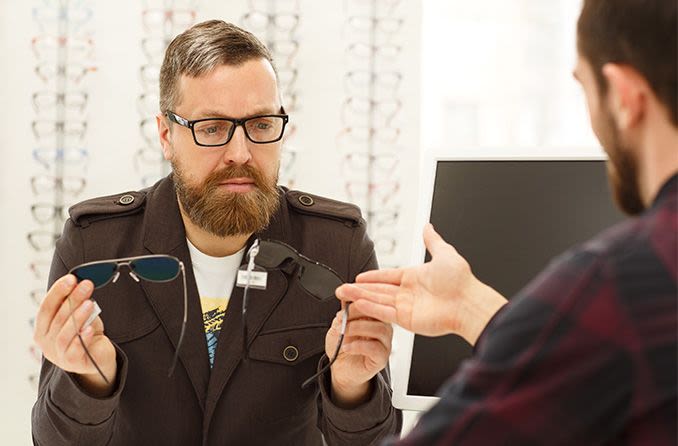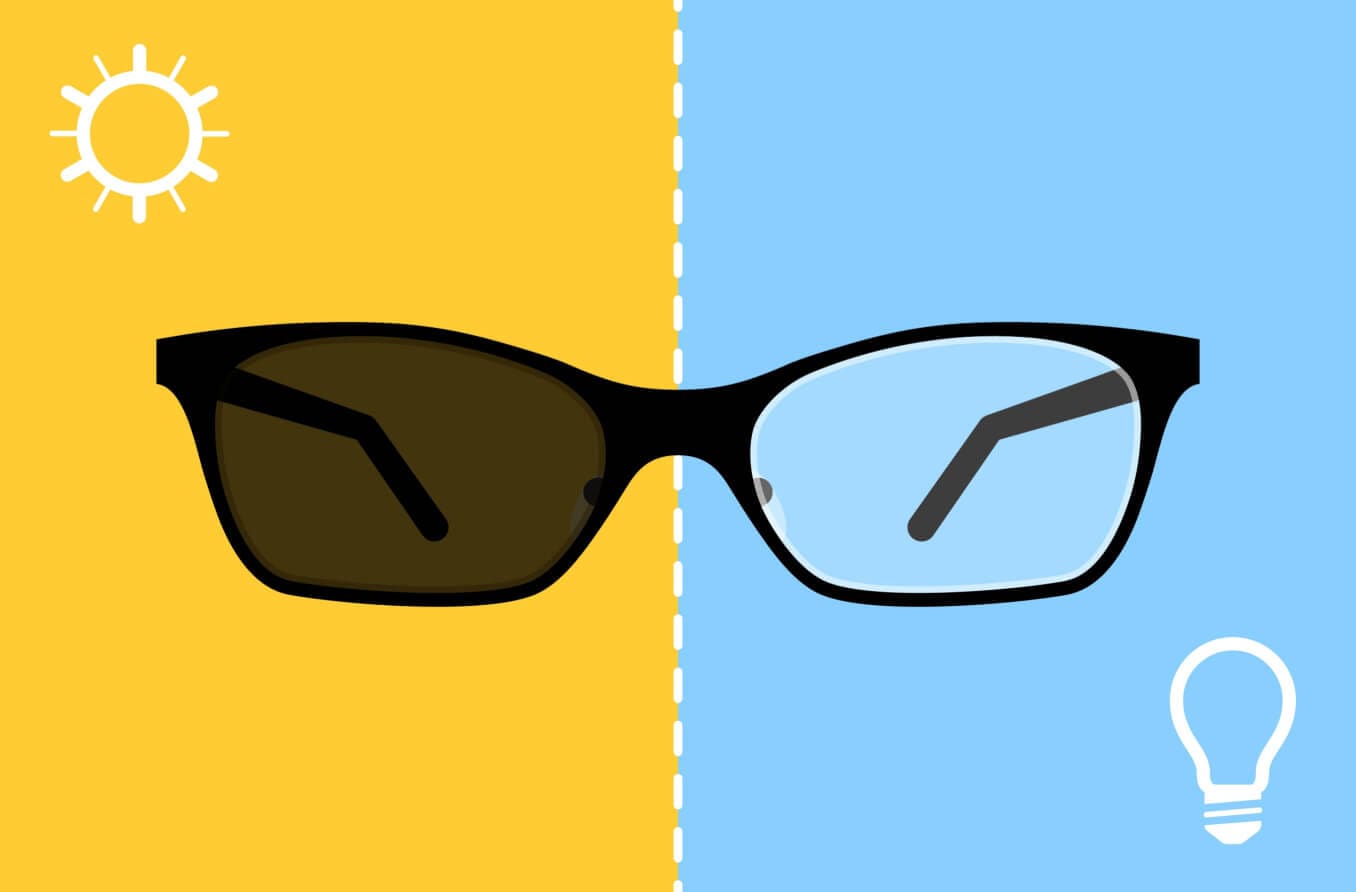Polarized sunglasses may make it easier and more comfortable to see outdoors, but wearing them while trying to read an LCD (liquid-crystal display) screen can sometimes — literally — leave your eyes in the dark.
Most LCDs, such as your smartphone and tablet, use a polarizing filter to help you see the screen in bright sunlight. But so do polarized sunglasses, meaning the two essentially cancel each other out, causing your LCD screen to appear dark or completely black when you look at it.
How do polarized sunglasses work?
Polarized sunglasses are designed to block glare — overly bright light reflected off shiny surfaces such as water and snow. Natural light consists of protons bouncing in many directions; polarized lenses filter that light, causing those protons to travel in a single, uniform direction (usually horizontal).
Polarized sunglass lenses are coated with a chemical compound composed of molecules that are parallel to one another. These molecules absorb any light waves traveling in the direction in which they’re aligned, preventing them from passing through the coating.
Why you can’t see an LCD screen when wearing polarized sunglasses
LCD screens and sunglasses typically contain a polarizing filter for the same reason: to make it easier for you to see clearly, especially in bright sunlight.
What tends to happen is your polarized sunglasses do their job by only allowing light to pass through vertically. Meanwhile, your phone screen emits horizontally vibrating light while blocking vertical light.
Your lenses and screen end up counteracting each other by working in opposite directions. As a result, you wind up seeing a dark or blacked-out image.
How to see your phone screen when wearing polarized lenses
The solution is simple: Rotate your tablet or phone screen by 90 degrees. This trick usually works because it positions your screen’s polarizing filters so they block light waves traveling in the same direction as your polarized sunglasses, allowing light to pass through.
Newer smartphone and computer screens have found ways to compensate for this issue, but you may still notice a darker screen when wearing polarized sunglasses with an older model screen.
In some cases, you may need to view LCDs on an instrument panel that can’t be rotated. This can be true for boaters and pilots who must be able to read instrumentation quickly and accurately to ensure their safety. For this reason, you should avoid wearing polarized sunglasses in these circumstances.
Polarized lenses also can interfere with your ability to see and read the displays on gas pumps and ATMs. To see more clearly when filling your tank or withdrawing money, remove your sunglasses when performing these tasks.
How can you tell whether sunglasses are polarized?
Any reputable eyewear retailer (brick-and-mortar store or online shop) will provide accurate labeling on sunglasses they offer, so you should be able to tell at a glance whether those sunglasses you’re considering have polarized lenses.
If you have an older pair of sunglasses, you can test them by obtaining a second pair of shades you know are polarized.
Hold the sunglasses in a way that allows you to look through both pairs of lenses at the same time. Rotate one pair of sunglasses by 90 degrees. If all light is blocked when passing through both pairs, then your older sunglasses probably have polarized lenses.
You also can test your sunglasses by looking at an LCD screen while wearing them. Just remember to rotate the device 90 degrees to make sure you’re checking for a polarizing filter that blocks light traveling either horizontally or vertically.
ARE YOUR SUNGLASSES POLARIZED? If not, it might be time for a new pair. Shop for polarized sunglasses at an optical store near you or an online eyewear retailer










